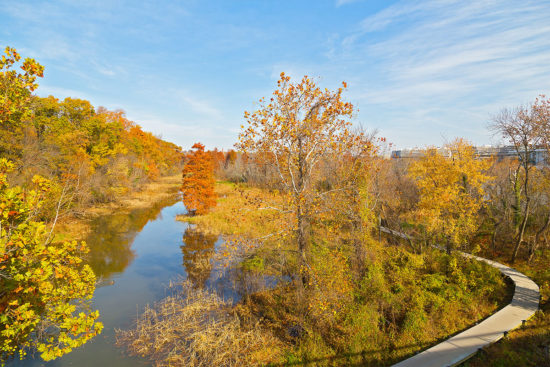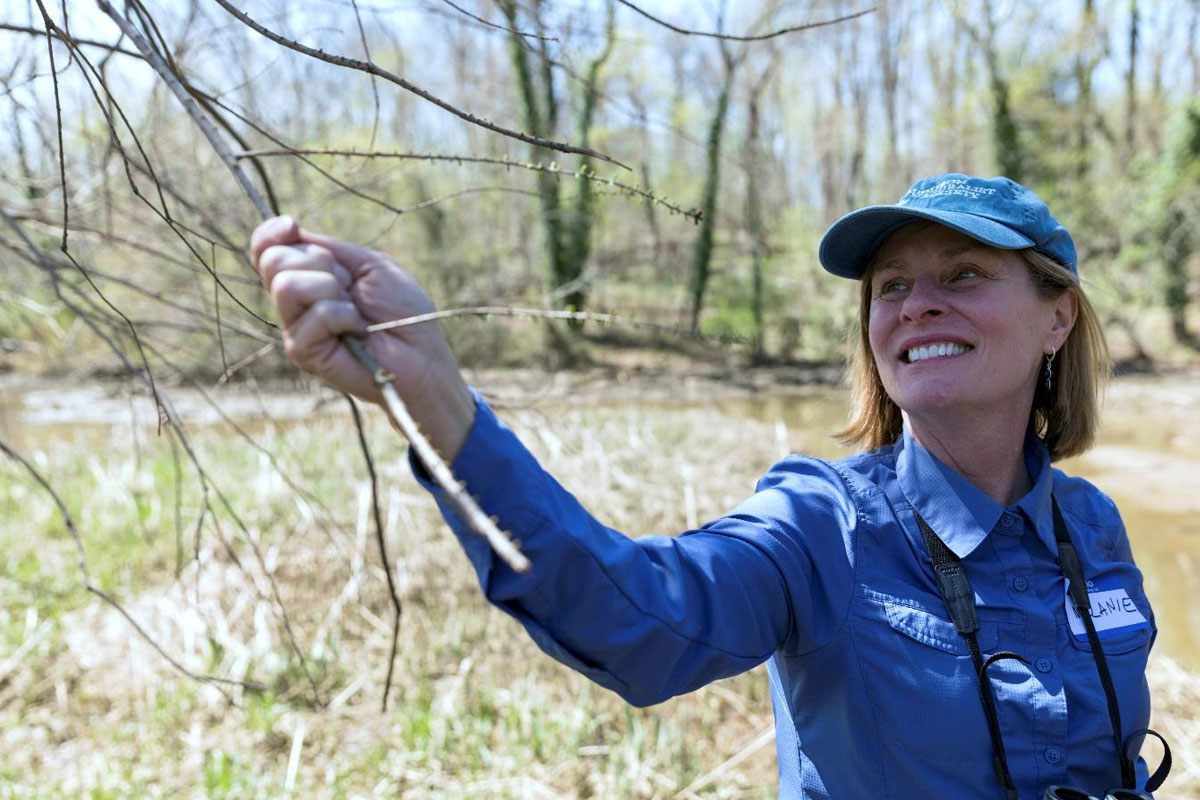In this time of COVID-19 numbers spiking and fallout and emotions from a divisive presidential election, stress levels are at an all-time high. Add to that the sadness and depression that many of us feel about having to alter or cancel our holiday plans with family and friends, and we could all use a mood-booster.
“Many doctors are now prescribing nature to their patients–it’s free and proven effective,” says Melanie Choukas-Bradley. the DC-based author, naturalist and certified forest bathing guide, whose books include Finding Solace at Theodore Roosevelt Island; Resilience—Connecting With Nature in a Time of Crisis; The Joy of Forest Bathing; City of Trees; A Year in Rock Creek Park, gives insightful guidance of how finding awareness of the natural world can put us in a more peaceful, relaxed state of mind.
How can you get what you call “an intimate awareness of the natural world, even within the city”?
Awareness of natural beauty–like the weather, air on your face, tree branches and fallen leaves, dew or frost on the grass and the last roses of autumn–is a habit that can grow into a meaningful and rewarding practice. Find and adopt a “wild home,” like your backyard or porch, neighborhood park or garden, or a special tree—any area in your city or town that you can visit often, in all types of weather and times of day and through the seasons. You can develop an intimate relationship with a special wild place over time, much like an intimate relationship with a friend.
Name some of your favorite outdoor spaces in the area.
Northern Virginia and the DMV offer many places for quiet contemplation. At Mount Vernon, you can soak up George Washington’s spectacular view of the widening Potomac or gaze into the branches of a tulip-tree that he planted over two centuries ago. From Riverbend and Great Falls, to Difficult Run, Scott’s Run and Turkey Run, all the way to Theodore Roosevelt Island, the shores of Virginia’s Potomac Gorge offer many parks and trails for woodland meditation and inspiration.

Theodore Roosevelt Island, at the southern end of the Gorge, is an 88.5-acre wild memorial to Theodore Roosevelt, our foremost conservation President. Administered by the National Park Service, not a car or even a bicycle is allowed on the island, making it a wooded oasis in the midst of the city. Walking across the footbridge from Rosslyn, you can feel your blood pressure lowering. I love to walk along the rocky island shore, under the magnificent trees, and mosey down the boardwalk through a silver maple swamp and a tidal marsh. You can watch the tides ebb and flow in a tidal inlet from a lookout spot along the boardwalk if you have patience. In my book, Finding Solace at Theodore Roosevelt Island, I take you through all four seasons on the island, describing the trees, wildflowers, birds and other wildlife.
How important is it to connect with nature in this era in this post-election, pandemic era? Can forest bathing help with this?
Spending time in nature is one of the best ways to alleviate stress and anxiety. I give step by step instructions for forest bathing in two of my books: The Joy of Forest Bathing—Reconnect With Wild Places & Rejuvenate Your Life and Resilience—Connecting With Nature in a Time of Crisis. I will be leading virtual and in-person forest bathing experiences for small groups in 2020. Friends of the National Arboretum is sponsoring forest bathing walks led by some of my colleagues and Capital Nature is also listing and sponsoring forest bathing walks.
What are some simple, practical ways to become one with nature, no matter the season?
If you have a regular mindfulness practice such as yoga, tai chi or meditation, why not take it outdoors? Many of us have developed the habit of taking neighborhood walks during the pandemic and there’s no need to stop with winter coming. Winter beauty is of a very special kind—the clarity of the light, especially at sunrise and sunset, and the purity of a fresh snowfall.
How can you use your own outdoor space at home to commune with nature, no matter the size or location?
When I wrote Resilience—Connecting With Nature in a Time of Crisis, I interviewed many friends who shared their experiences connecting with nature now that travel and activities are restricted. The writer Sadie Dingfelder, who lives on the 10th floor of a high rise near Nats Park, made friends with a pair of pigeons who visit her balcony each day. Many people have shared their new-found appreciation for their balconies, rooftops, decks and backyards. If you’re limited to the indoors, spending time with houseplants can alleviate stress.
Ana Ka’ahanui, co-founder of Capital Nature, also shared some of her favorite nature areas in NOVA.
- Huntley Meadows has a boardwalk for watching birds, turtles, frogs and trees
- Mason Neck, located on the water with birding and lots of tree diversity
- Riverbend Park, on the river, where you can spot Virginia bluebells in season, river, tree diversity and engage in birding
- Wolf Trap Park, which has a native garden, creek, trees and birding
- Meadowlark Botanical Gardens, with gorgeous collections of flora, water lilies, tree diversity, birding, outdoor art, gazebo and a pond
- Ellanor C. Lawrence Park, situated alongside a creek with birding and an old growth forest



